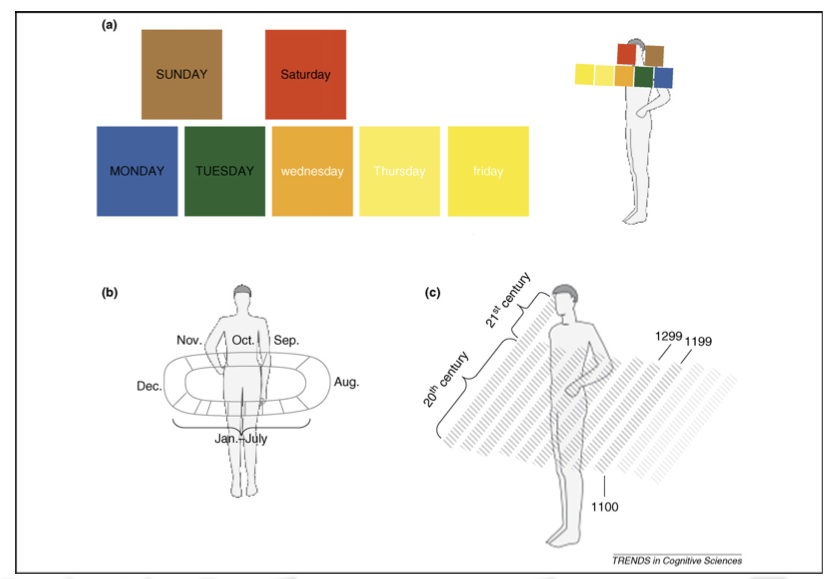Many of us have had the experience of unusual associations between our senses and our memories. Perhaps a certain smell unexpectedly reminds you of a grandparent, or certain foods evoke memories of old friends. Associations between memories and sensory experience are normal, but about 4% of the population experiences a condition called synesthesia in which normal sensory experiences – like reading, talking, or listening to music – cause them to experience additional unusual and unrelated sensations. For example, people with lexical-gustatory synesthesia experience complex tastes when they hear certain words or letters. One such subject says that the word “jail” tastes like cold hard bacon, and the sound of the letter “L” can taste like potatoes, fingernails, or Rice Krispies, depending on how it is pronounced (Simner, 2006).
Synesthesia is not limited to word-induced tastes, however. Types of the condition include associations between musical tones and colors, units of time and spatial locations, and spoken words and smells, just to name a few. Interestingly, about 88% of all synesthetic experiences are triggered by linguistic units such as words, letters, and numbers, both spoken and written (Simner, 2006). The most common form of the condition is called Grapheme-Color Synesthesia in which affected persons associate specific colors with letters and numbers, sometimes to the point of seeing the colors projected into the world. Projector synesthesia (seeing colors projected into the space in front of you) is less common than associator synesthesia, in which colors are seen in the mind’s eye.
The hallmarks of synesthesia (as opposed to general sensory associations) are that the patterns of associations are specific, automatic, idiosyncratic (no two people have the same synesthetic associations), and stable over time. These characteristics of sensory associations are testable by giving subjects a survey of items such as names, numbers, days of the week, and other words to which they have to assign a color. When given the same survey 3 months later, synesthetes’ answers will correspond by 90% or more, whereas non-synesthete control subjects produce about 40% correspondence (Mattingley, Rich, Yelland, & Bradshaw, 2001). Such surveys can also be used to test other types of synesthesia; they just need to be adjusted for the specific kind of association.
I happen to experience two different kinds of synesthesia – grapheme-color and time-space – and I can attest to the fact that my associations have been specific to me for as long as I can remember and they are not under my conscious control. In reality, I do not feel any desire to control or stop my synesthesia because it can be quite enjoyable to think about words in colors and to interact with the months as though they follow a physical path around me. Typically these sensations do not interfere with my daily life, and in fact, I find that my memory benefits from my color associations (and I certainly take advantage of my built-in mnemonic device when studying for exams!). Below is an image of my personal grapheme-color alphabet, as well as a diagram of some unique time-space representations of the days of the week (top), the months of the year (bottom left), and years through several centuries (bottom right) (Simner, 2006):
A student asked me recently why – if 4% of the population experiences some form of synesthesia – was I the first such person he had met? I can’t say for sure, but from my own experience, synesthesia does not feel unusual or bizarre to me and so it is uncomfortable to think about it as “having a condition.” It probably does not come up in conversation very often because I don’t always think of it as a noteworthy topic of discussion. Perhaps you or someone you know has synesthesia and hasn’t mentioned anything about it for the same reason: it feels normal.
If you’re interested in learning more about synesthesia, I recommend checking out Julia Simner’s research and lab at the University of Edinburgh. Here’s one article to get you started: Beyond Perception: Synesthesia as a Psycholinguistic Phenomenon (Simner, 2006)

